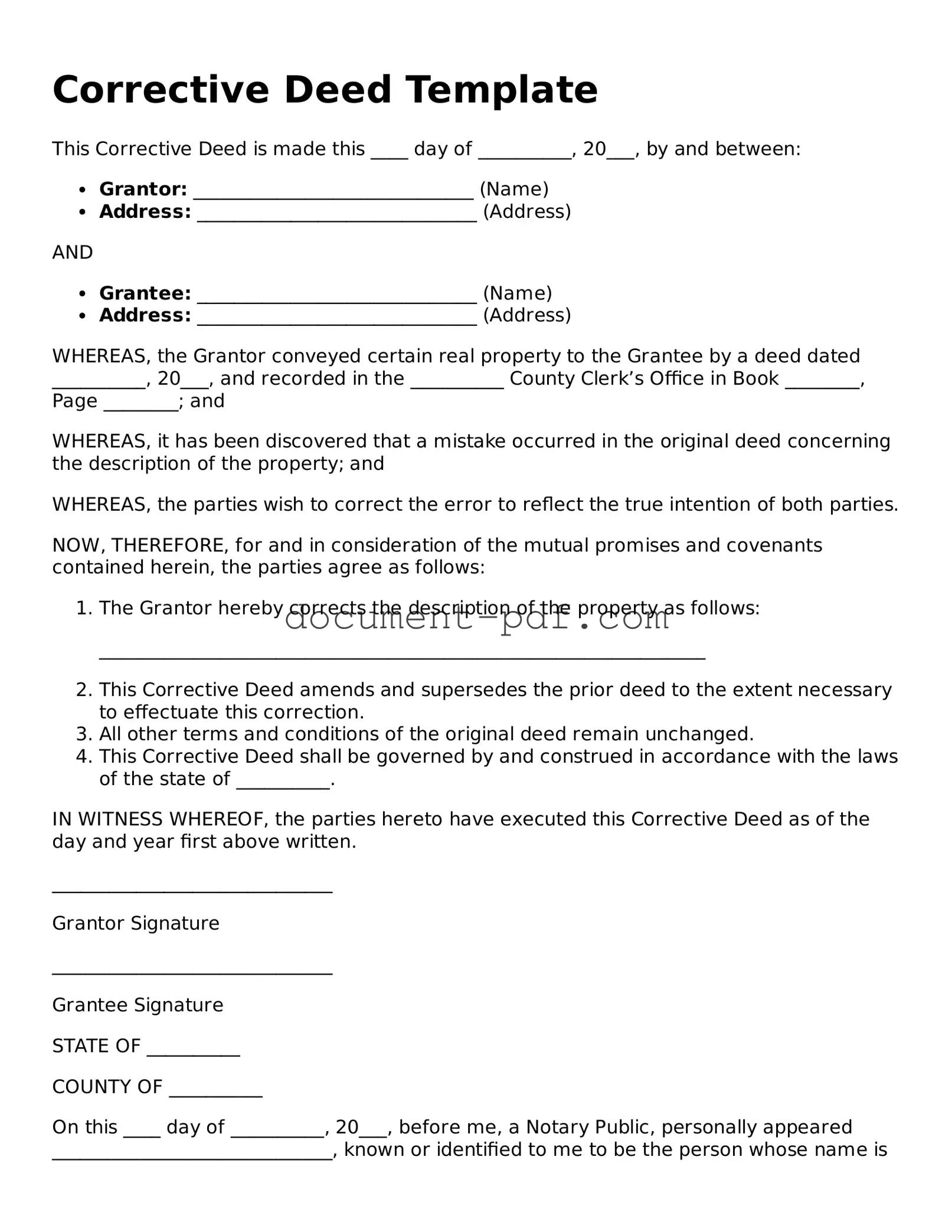Corrective Deed Template
This Corrective Deed is made this ____ day of __________, 20___, by and between:
- Grantor: ______________________________ (Name)
- Address: ______________________________ (Address)
AND
- Grantee: ______________________________ (Name)
- Address: ______________________________ (Address)
WHEREAS, the Grantor conveyed certain real property to the Grantee by a deed dated __________, 20___, and recorded in the __________ County Clerk’s Office in Book ________, Page ________; and
WHEREAS, it has been discovered that a mistake occurred in the original deed concerning the description of the property; and
WHEREAS, the parties wish to correct the error to reflect the true intention of both parties.
NOW, THEREFORE, for and in consideration of the mutual promises and covenants contained herein, the parties agree as follows:
- The Grantor hereby corrects the description of the property as follows:
_________________________________________________________________
- This Corrective Deed amends and supersedes the prior deed to the extent necessary to effectuate this correction.
- All other terms and conditions of the original deed remain unchanged.
- This Corrective Deed shall be governed by and construed in accordance with the laws of the state of __________.
IN WITNESS WHEREOF, the parties hereto have executed this Corrective Deed as of the day and year first above written.
______________________________
Grantor Signature
______________________________
Grantee Signature
STATE OF __________
COUNTY OF __________
On this ____ day of __________, 20___, before me, a Notary Public, personally appeared ______________________________, known or identified to me to be the person whose name is subscribed to the within instrument, and acknowledged that they executed the same for the purposes therein contained.
IN WITNESS WHEREOF, I have hereunto set my hand and affixed my official seal.
______________________________
Notary Public
My Commission Expires: ____________
